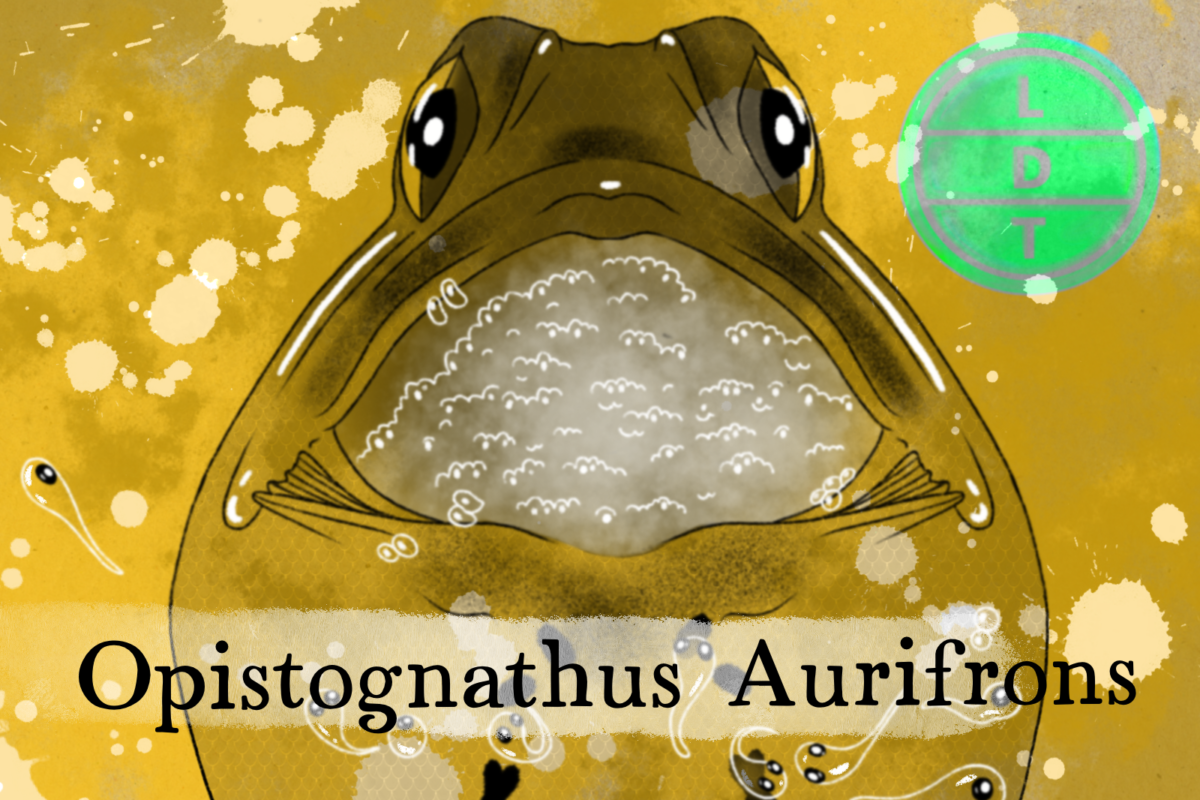“…and today we’re talking about the Listerine dad fish. But more on that later.”
The bright and colorful coral reefs are home to a wide variety of fish, but very few can be considered decent parents. The yellowhead jawfish is, however, an exception. Taking care of kids is never easy, but try doing it without a diaper genie and, you know, hands. But this finned father has figured out a way to keep the kiddos safe and sound here in Life, Death, and Taxonomy.
Description of the Yellowhead Jawfish
The head and upper body of the yellow-headed jawfish are a light, brilliant yellow color that gradually fades to a pearlescent blue hue.
They have a distinctive appearance with their elongated bodies and large mouths.
Measure Up
Welcome to the beloved Measure Up segment. The official listener’s favorite part of the show! The part of the show when we present the animal’s size and dimension in relatable terms through a quiz that’s fun for the whole family. It’s also the part of the show that’s introduced by you when you send in audio of yourself saying, singing, or chittering the words Measure Up into ldtaxonomy at gmail dot com. We don’t have a new Measure Up intro!
Length
10 centimeters (3.9 in)
A Yellow Jawfish is the same length as which of the follow things:
- 10% the height of a miniature donkey at the withers
- 14 macadamia nut diameters
- 3 lemons
Fact: Donkeys have an innate hatred for canines and serve as great farm guardians if you’re worried about foxes, wolves, or coyotes.
Depth
3 to 40 meters (9.8 to 131.2 ft)
The living depth of a Yellow Jawfish is the same as:
- The height of a giant kelp
- The water depth at which the color yellow fades
- The height of five ponderosa lemon trees
Fact: The Ponderosa lemon tree is a tropical citrus hybrid fruit tree that grows huge lemons and is famous for its purple flowers.
Fast Facts about the Yellowhead Jawfish
Jawfish are native to coral reefs in the Caribbean Sea.
Yellow-headed jawfish inhabit patches of sand and coral rubble around the edges of reefs.
Since there’s no natural hiding place in these open areas, jawfish dig burrows into the sand for protection.
When danger threatens, they swiftly dive into their burrows to seek cover.
Jawfish are industrious in taking care of their homes. They meticulously maintain their burrows by lining the entrance with rocky rubble to prevent cave-ins.
These fish are like little architects, constantly shoveling out mouthfuls of sand to keep their homes in shape.
Interestingly, they sometimes raid a neighbor’s burrow for choice pebbles and shells.
Their big mouths serve multiple purposes: they use them like scoops while digging their burrows.
Males can also be territorial and may use their mouths to “joust” with other jawfishes.
Major Fact: I brought you into this world and by closing my mouth I can take you out of it.
- The jawfish is a type of fish known for its unique parenting behavior, where it carries its eggs in its mouth until they hatch. It’s a mouthbrooder.
- While incubating the eggs, the jawfish continuously fans them with its pectoral fins to ensure a steady flow of oxygen. It adjusts the intensity of its fanning based on factors like water quality and temperature to provide the ideal environment for the eggs.
- This fanning action creates water movement around the eggs, preventing them from suffocating and promoting proper oxygenation.
- The constant movement of water also helps to remove waste products produced by the developing embryos, keeping the environment clean.
- The oxygen-rich water circulating around the eggs helps to prevent the growth of harmful bacteria and fungi, reducing the risk of infection.
- The jawfish may also periodically open and close its mouth to flush out stagnant water and replenish oxygen.
- During this process, the jawfish remains vigilant, guarding its brood against potential predators that may try to snatch the eggs.
- In addition to fanning, the jawfish may use its tongue and throat muscles to create suction, drawing in fresh water to aerate the eggs.
- The jawfish may adjust its behavior in response to changes in environmental conditions, ensuring the eggs receive adequate aeration at all times.
- Research suggests that the frequency and duration of aeration may vary among jawfish species, reflecting adaptations to different habitats.
- As the eggs approach hatching, the jawfish may increase its aeration efforts to meet the growing oxygen demands of the developing embryos.
- After hatching, the jawfish continues to provide parental care, sheltering the young fry in its mouth until they are ready to venture out on their own.
Ending: So nestle into your burrow, stay vigilant for predators, and gather your children into your mouth so they can breathe like the jawfish here in LDT.

